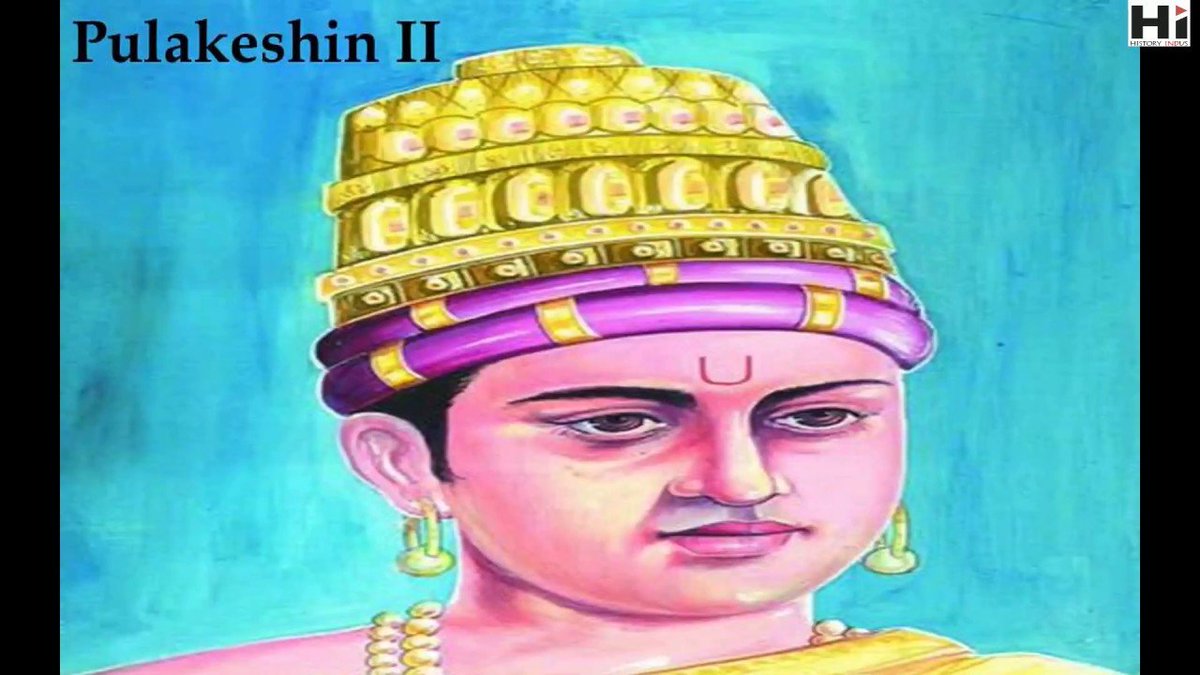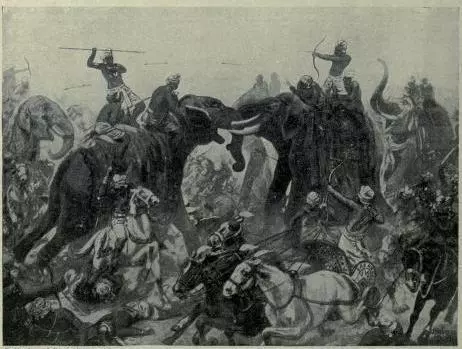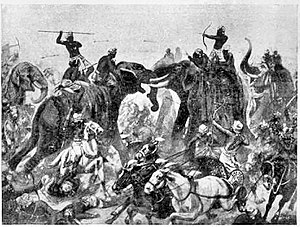Thread on Pulakesin II
Pulakesin II was one of the greatest King of Chalukya Dynasty.
He enthroned in 620 A.D. as soon as he came to the throne he restored peace and also granted pardon to all those who opposed his succession.
Pulakesin II was one of the greatest King of Chalukya Dynasty.
He enthroned in 620 A.D. as soon as he came to the throne he restored peace and also granted pardon to all those who opposed his succession.
Pulakesin II began his rule in the year 610 A.D. and assumed the pompous title of ‘Parameswara-SriPrithivi-Ballava-Satya- shraya.
After attending to his primary duties in respect of peace and stability, he next entered upon a career of conquests and invasions.
After attending to his primary duties in respect of peace and stability, he next entered upon a career of conquests and invasions.
His birth name was Ereya and he was born to Kirtivarman-I. Since, he was too young when his father died, his paternal uncle Mangaldesa was made the king.
His uncle denied him his right to get the throne when he grown up and he rebelled against his uncle.
His uncle denied him his right to get the throne when he grown up and he rebelled against his uncle.
Ereya organized an army near modern Kolar in Karnataka and defeated and killed Mangaldesa (Peddavadagur inscription).
His main aim in life was to expand his Chalukya Kingdom as big as possible. We can find his military achievements in his famous Aihole Prasasti inscriptions dated on 634-35 A.D.
During his period he defeated Kadambas who live in a region called Banavasi, Moriyas of Konkana, Malavas, the Latas and Gurjaras. He also attacked the Kingdom of Pallavas and forced King Mahendra Varma to accept his superiority.
Pulakesin II defeated a race named Kadambas who lived in a region called Banavasi; subjugated the Gangas of South Mysore
He also conquered the region of Pistapura and appointed his own son as the Governor of that place.
He also conquered the region of Pistapura and appointed his own son as the Governor of that place.
His army crossed river Kaveri and compelled the rulers of Chola, Kerala and Pandya compelled them to accept his friendly diplomatic supremacy.
Pulakesin II occupied entire South Indian territories and dominated all the princes with his high commendable nature. No one dares him to disturb or not put a glimpse on Pulakesin II kingdoms.
The date of Pulakeshi’s great triumph over Harsha in a battle fought primarily with elephants, on the banks of the Narmada at 618 AD.
Pulakeshin, who ruled from the Chalukyan capital of Badami, challenged Harsha’s conquests.
Pulakeshin, who ruled from the Chalukyan capital of Badami, challenged Harsha’s conquests.
The former had established himself as ‘lord paramount’ of the south, as Harsha had of the north.
Unwilling to tolerate the existence of a powerful rival in the south, Harsha had marched from Kanauj with a huge force.
Unwilling to tolerate the existence of a powerful rival in the south, Harsha had marched from Kanauj with a huge force.
The Malava king played a role in the murder of Harsha's predecessor Rajya-vardhana, and also killed Harsha's brother-in-law, the Maukhari ruler Graha-varman. The Gurjara ruler Dadda II aided the Maitraka dynasty against Harsha.
When Harsha decided to take action against these three kingdoms, their rulers probably sought protection of Pulakeshin. Pulakeshin may have granted asylum to Harsha's adversaries.
In that great battle, Pulakesin II successfully resisted the army of Harsha and did not permit the invaders to advance towards the south but Hrashavardhan was defeated.
Both the armies fought in a fierce storm.
after that Harshavardhan gave up his thoughts of conquering the South Indian continents and returned to the North.
after that Harshavardhan gave up his thoughts of conquering the South Indian continents and returned to the North.
The Aihole inscription poetically states that Pulakeshin's elephants had to avoid the neighbourhood of the Vindhya mountains beside the Narmada River, because they "by their bulk, rivalled the mountains"
The Pallavas were the southern neighbours of the Chalukyas. The Vishnukundins were their allies at the time, and Pulakeshin’s subjugation of the Vishnukundins brought him in conflict with the Pallava king.
Administration:
The emperor was not only a powerful King but also one of the most benevolent administrators of the Southern History.
The emperor was not only a powerful King but also one of the most benevolent administrators of the Southern History.
The celebrated Chinese Pilgrim Hiuen Tsang also visited the Kingdom of Chalukya and observed the administration system of Pulakesin II and praised him for his power and for his benevolent activities.
Though he had fought against the Pallavas during the reign of King Mahendra Varman I, yet he invaded the same Pallava Kingdom once again when his earlier adversary’s son Narasimha Varman I ruled.
This time, however, Pulakesin’s expeditions did not succeed, and he had to return to his capital in shame.
Soon thereafter, the Pallava King Narasimha Varman invaded the Chalukya Kingdom and his soldiers surrounded its capital, Badami.
Soon thereafter, the Pallava King Narasimha Varman invaded the Chalukya Kingdom and his soldiers surrounded its capital, Badami.

 Read on Twitter
Read on Twitter




